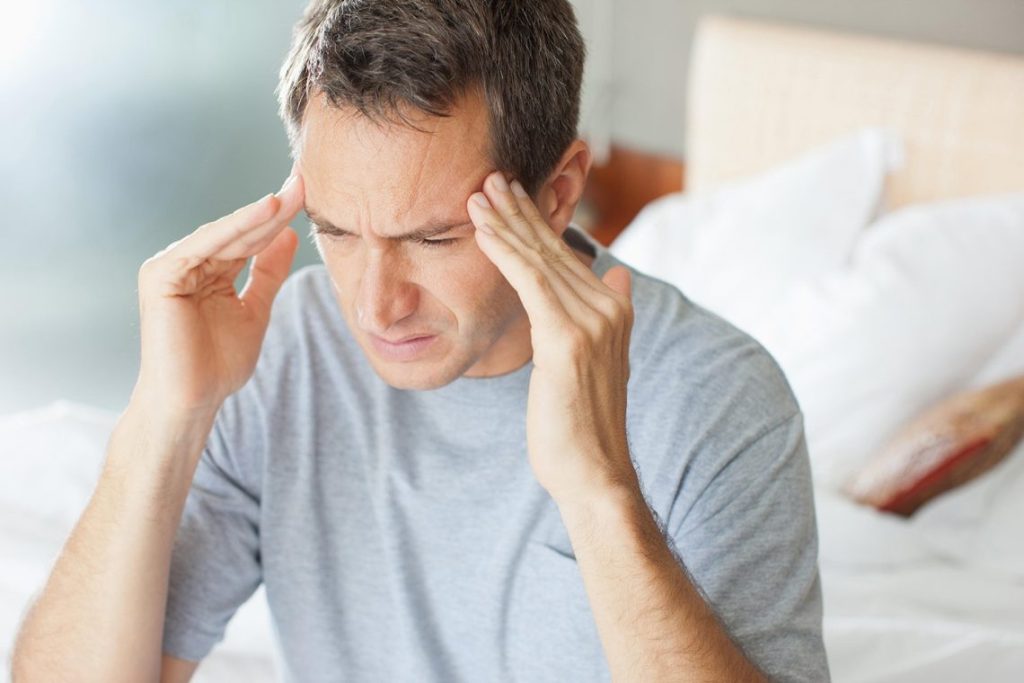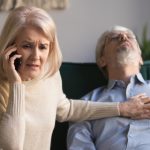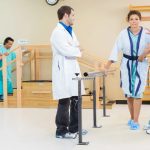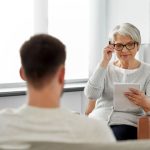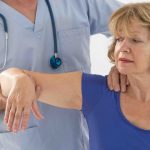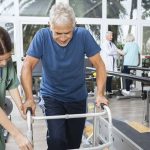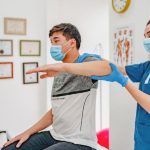Medically reviewed by Nicholas R. Metrus, MD
While stroke symptoms are similar between men and women, there can be disparities in which symptoms are reported, with women reporting more non-traditional symptoms. This can lead to a difference in time to treatment and which treatments are used. As a result, men are less likely to die from a stroke than women.1
This article discusses the signs of stroke in men, how to understand your risk for stroke, and how to prevent one.
Symptoms
Stroke symptoms for men and women are similar and include:2
- Severe headache with unknown reason
- Numbness or weakness of the face, arms, and/or legs (usually on one side)
- Confusion, difficulty understanding speech, and trouble speaking
- Vision problems in one or both eyes
- Difficulty walking
- Dizziness and loss of balance or coordination
Less common stroke symptoms may include:3
- Sudden nausea or vomiting for an unknown reason
- Fainting, seizures, or coma
There is some evidence to suggest disparities in “time to treatment” between women and men, which can increase long-term disability and death rates. Some scientists suspect that the disparity may be due to men and women reporting different symptoms.
An older study analyzed stroke symptoms from patient interviews and classified the symptoms as either non-traditional or traditional.
Non-traditional stroke symptoms included:4
- Pain
- Mental status change
- Lightheadedness
After accounting for sex, the study found that women were more likely to report non-traditional symptoms than men. Most commonly, women reported mental status changes, including confusion, disorientation, fatigue, or other unusual behavior.4
Stroke Demographics
Strokes kill more men in America every year than prostate cancer and Alzheimer’s disease combined.5 In addition, men under 44 years old become hospitalized for ischemic stroke at a higher rate than women of the same age. Although stroke statistics are concerning, fortunately about 80% of all strokes are preventable.6
For additional information about the rehabilitation after a stroke you can watch a video demonstrating exercises and rehabilitation recommendations.
A set of exercises for rehabilitation of post-stroke patients. Set No1 is aimed at improving the functions associated with mobility in bed.
Warning Signs
Use the FAST acronym to remember stroke warning signs to look for:7
- F = Facial drooping, including numbness and one-sided drooping
- A = Arm weakness or numbness, especially on one side
- S = Speech slurring or difficulty
- T = Time to call 911 fast and inform the emergency person when symptoms began
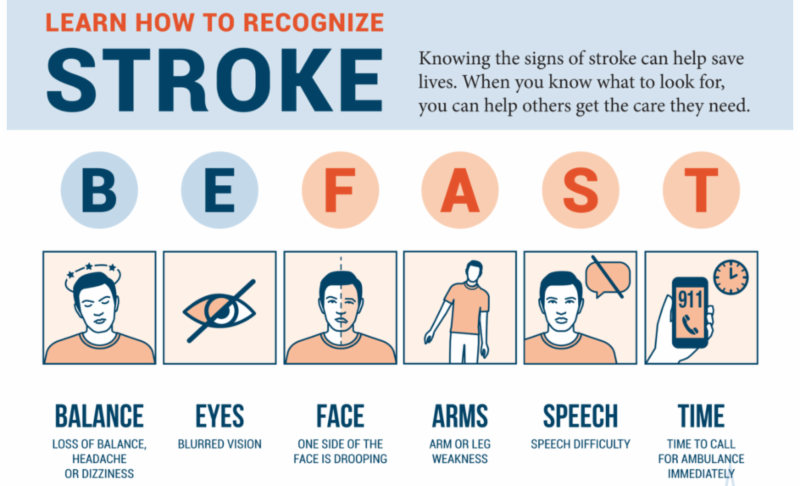
The faster a patient gets help, the more likely they are to recover from a stroke. The length of time it takes to get a patient to the hospital may also determine the treatment options available to them.
Mini-Strokes
A transient ischemic attack (TIA), or mini-stroke, is a stroke that causes symptoms that last from a few minutes to about an hour. Men and women may decide not to seek treatment because their symptoms have resolved.
However, TIAs can be “warning strokes,” which may be followed by more TIAs, larger strokes, or other cardiovascular issues in the following weeks. More than a third of people who have a TIA have a more significant stroke within one year, and as many as 15% have a major stroke within three months.89
If you or a loved one experiences any stroke symptoms—even for a few minutes—it’s essential to seek treatment immediately.
EXERCISES FOR REHABILITATION OF POST-STROKE PATIENTS. SET №2 IS AIMED AT IMPROVING THE MOBILITY AND STABILIZATION OF THE PELVIC COMPLEX
Risk Factors
High blood pressure is a major risk factor for stroke in men. Almost half of men in the United States have high blood pressure (over 130/80 millimeters of mercury, or mmHg). Some take blood pressure medication to keep their blood pressure within a healthy range.
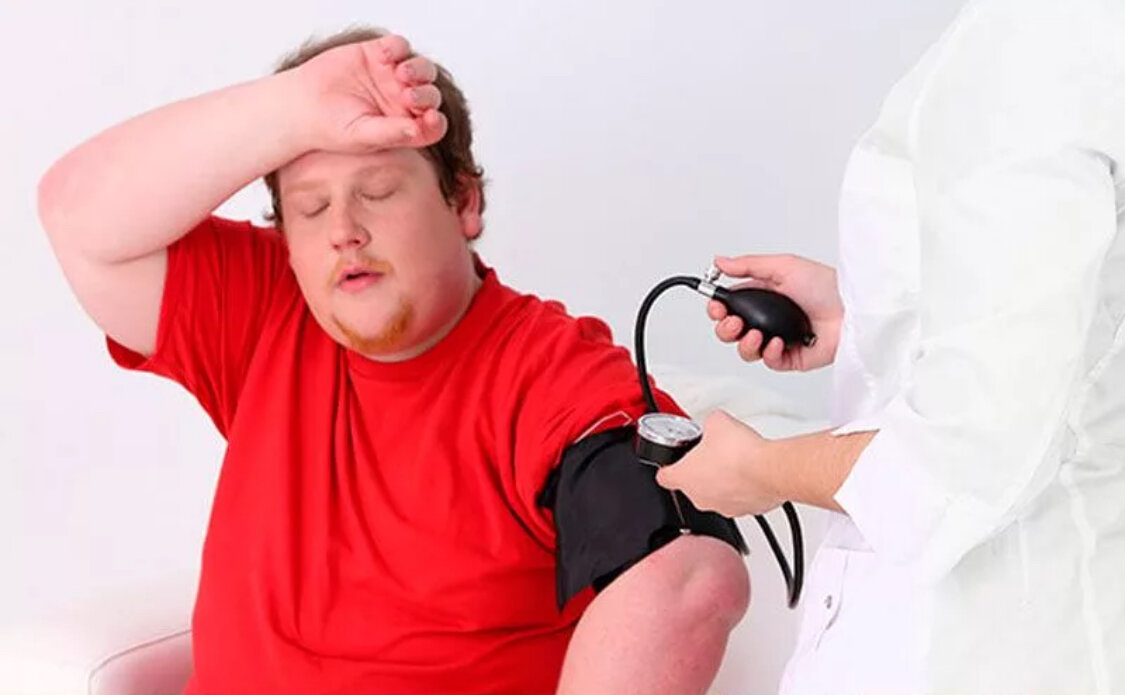
However, according to the Centers for Disease Control and Prevention (CDC), 4 out of 5 men with high blood pressure do not have their blood pressure controlled in a healthy range.5
Other Risk Factors for Stroke
Other risk factors for stroke in men include:5
- Smoking: Causes vessel damage that increases the chance of stroke
- Having obesity: About 3 out of 4 men in the U.S. are overweight or have obesity
- Diabetes: Affects blood vessels in the brain
- Too much alcohol: Alcohol raises blood pressure and causes other cardiovascular issues that increase the risk of stroke
- Not exercising enough: Most men in the U.S. do not meet exercise standards
What to Do
If you or someone else is having stroke symptoms, call 911 immediately.
Do not drive them to the hospital. An ambulance can begin treatment on the person upon arrival and triage them on the way to the hospital.
Calling 911 will ensure that the patient receives medical attention and treatment as quickly as possible.
A SET OF EXERCISES FOR REHABILITATION OF POST-STROKE PATIENTS. SET №3 IS AIMED AT IMPROVING THE MOBILITY AND FUNCTION OF THE UPPER LIMB, STABILIZING THE SHOULDER GIRDLE
Treatment
Upon arriving at the hospital, the health team will ask about:
- Person’s medical history
- Onset time of stroke symptoms
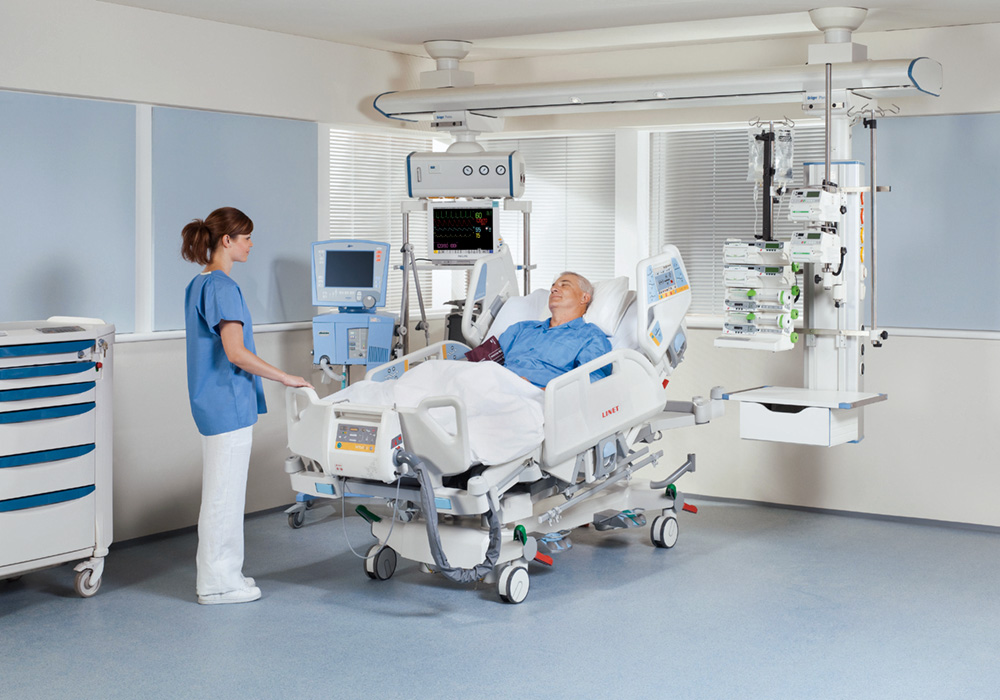
Brain imaging will be ordered to determine the type of stroke you had. The two types of imaging used to diagnose a stroke include:
- CT scan
- Magnetic resonance imaging (MRI)
After imaging, you will work with a neurologist, a neurosurgeon, or another specialist to determine the proper care plan based on your diagnosis and the results of your tests.
Tissue plasminogen activator (TPA)
If you arrive at the hospital and receive an ischemic stroke diagnosis within three hours of your symptom onset, you may be eligible for a tissue plasminogen activator (TPA), known as a “clot-busting treatment.” This is why it’s essential to call 911 the first moment a stroke is suspected.10
TPA has risks that you can discuss with your care team. However, research has shown that patients who receive TPA:10
- Are more likely to fully recover
- Have less disability than patients who don’t receive the drug
- Are less likely to need long-term care in a skilled nursing facility
Other stroke treatment options include:10
- Medication
- Surgery or other procedures to stop bleeding
- Endovascular procedures, such as coiling to remove a clot
A SET OF EXERCISES FOR REHABILITATION OF POST-STROKE PATIENTS. SET №4 IS AIMED AT IMPROVING THE MOBILITY AND FUNCTION OF THE LOWER LIMB, STABILIZING THE PELVIC GIRDLE
Recovery
Everyone recovers from a stroke differently. Some people have a full recovery, but it can take months to years of rehabilitation. In some cases, people never fully recover and have lifelong disabilities.
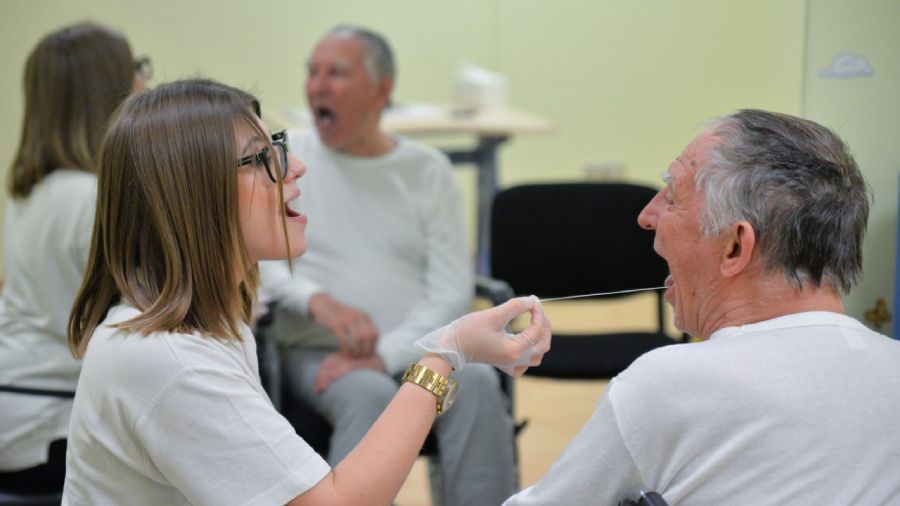
Some of the residual effects of a stroke that people may have include:11
- Paralysis, weakness, or numbness on one or both sides
- Difficulty with memory, thinking, judgment, awareness, attention, learning, and judgment
- Difficulty speaking or understanding speech
- Trouble controlling or expressing emotions
- Extremity pain
- Difficulty chewing or swallowing
- Bladder and bowel control issues
- Depression and anxiety
Stroke recovery will include working with specialists such as:
- Speech therapists: Help people with language and swallowing skills
- Occupational therapists: Help with activities of daily living such as dressing, bathing, eating, and writing
- Physical therapists: Help the person re-learn body movement and coordination affected by the stroke
How Long Does It Take to Recover From a Stroke?
Lifestyle Changes to Avoid Repeat Strokes
According to the CDC, 1 in 4 stroke survivors has another stroke within five years.10 After a stroke, it is vital to make healthy lifestyle changes to lower your chances of having another one. Your healthcare provider may advise you to make changes to your diet and start an exercise program after fully recovering from your stroke.
Prevention
80% of strokes are preventable by proactively taking care of medical conditions and making healthy lifestyle changes.6 Before starting a new exercise routine or taking over-the-counter medications, always talk to your healthcare provider.

Ways to prevent strokes include:5
- Control blood pressure through exercise and medication if needed. Take medications per your healthcare provider’s orders.
- Manage health conditions, such as heart disease, diabetes, and high blood pressure per your provider’s orders
- Take aspirin to help reduce stroke risk. Talk to your healthcare provider before taking aspirin, because it can worsen some types of strokes.
- Manage cholesterol with a healthy diet and exercise.
- Don’t smoke. If you smoke, find resources that can help you quit.
- Eat a healthy diet. Choose healthy vegetables, foods high in fiber and whole grains, and foods with low salt if you have high blood pressure.
- Exercise regularly and maintain a healthy weight. Men and women age 18 and older should get at least two hours and 30 minutes of physical movement per week and do muscle training at least two times per week.
Talk to your healthcare provider about ways that you can prevent a stroke based on your specific risk factors, health conditions, and concerns.
By Sarah Jividen, RN
Jividen is a freelance healthcare journalist. She has over a decade of direct patient care experience working as a registered nurse specializing in neurotrauma, stroke, and the emergency room.

Demo version of GRS workouts for rehabilitation of post-stroke patients on YouTube
You can find more information about Stroke in our Blog.
Our website presents sets of exercises for the rehabilitation of post-stroke patients in the following four areas:
-
A SET OF EXERCISES FOR REHABILITATION OF POST-STROKE PATIENTS. SET №1 IS AIMED AT IMPROVING THE FUNCTIONS ASSOCIATED WITH MOBILITY IN BED
-
EXERCISES FOR REHABILITATION OF POST-STROKE PATIENTS. SET №2 IS AIMED AT IMPROVING THE MOBILITY AND STABILIZATION OF THE PELVIC COMPLEX
-
A SET OF EXERCISES FOR REHABILITATION OF POST-STROKE PATIENTS. SET №3 IS AIMED AT IMPROVING THE MOBILITY AND FUNCTION OF THE UPPER LIMB, STABILIZING THE SHOULDER GIRDLE
-
A SET OF EXERCISES FOR REHABILITATION OF POST-STROKE PATIENTS. SET №4 IS AIMED AT IMPROVING THE MOBILITY AND FUNCTION OF THE LOWER LIMB, STABILIZING THE PELVIC GIRDLE
You may also find useful information and sets of exercises in the section APHASIA AND DYSARTHRIA, where 5 sets of exercises for rehabilitation for speech disorders are currently presented.
Summary
A stroke is a medical emergency caused by a lack of oxygenated blood flow to the brain. Strokes can present differently in men. The most common stroke symptoms for men include severe headache, numbness or weakness of the face, legs, and arms, confusion, vision issues, difficulty walking, and loss of balance. High blood pressure is a major risk factor for stroke in men, so managing underlying conditions like this one can help prevent stroke.
Overview
Having a stroke is a major life event that can significantly impact your quality of life. Fortunately, about 80% of strokes are preventable by proactively taking care of medical conditions and making healthy lifestyle changes. Talk to your healthcare provider about ways to lower your risk for stroke. Stroke survivors and loved ones both benefit from understanding stroke risk and preventative measures.
FREQUENTLY ASKED QUESTIONS
1. Are there warning signs days before a stroke?
There may be some warning signs in the hours or days leading up to an ischemic stroke, but in most cases, stroke symptoms appear to come on suddenly.
2. How can I tell if someone has had a stroke in the past?
Some of the residual effects of a stroke that people may have include:11
-
- Paralysis, weakness, or numbness or both on one side
- Difficulty with memory, thinking, judgment, awareness, attention, learning, or judgment
- Difficulty speaking or understanding speech
- Trouble controlling or expressing emotions
- Extremity pain
- Difficulty chewing and swallowing
- Bladder and bowel control issues
If someone had a silent stroke (a stroke that doesn’t cause any noticeable symptoms), the damage would appear on an MRI or CT scan.
3. How long do you have symptoms before a stroke?
There may be some warning signs in the hours or days leading up to an ischemic stroke. However, most stroke symptoms appear to start suddenly and can include:
-
- Severe headache with unknown reason
- Numbness or weakness of the face, legs, and arms, often occurring on one side
- Confusion, difficulty understanding speech, and trouble speaking
- Vision problems in one or both eyes
- Difficulty walking
- Dizziness and loss of balance
Less common stroke symptoms may include:3
-
- Sudden nausea or vomiting for an unknown reason
- Fainting, seizures, or coma
Sources
https://www.verywellhealth.com/signs-of-stroke-in-men-5213992
- Centers for Disease Control and Prevention. Family history and other characteristics that increase risk for stroke.
- Centers for Disease Control and Prevention. Stroke signs and symptoms.
- Northwestern Medicine. Warning signs of stroke.
- Lisabeth LD, Brown DL, Hughes R, Majersik JJ, Morgenstern LB. Acute stroke symptoms. Stroke. 2009;40(6):2031-2036. doi:10.1161/STROKEAHA.109.546812
- Centers for Disease Control and Prevention. Men and stroke.
- Centers for Disease Control and Prevention. Preventing stroke deaths.
- American Stroke Association. Stroke symptoms.
- American Stroke Association. What is a TIA.
- Centers for Disease Control and Prevention. Types of strokes.
- Centers for Disease Control and Prevention. Stroke treatment.
- Centers for Disease Control and Prevention. Recovering from stroke.

